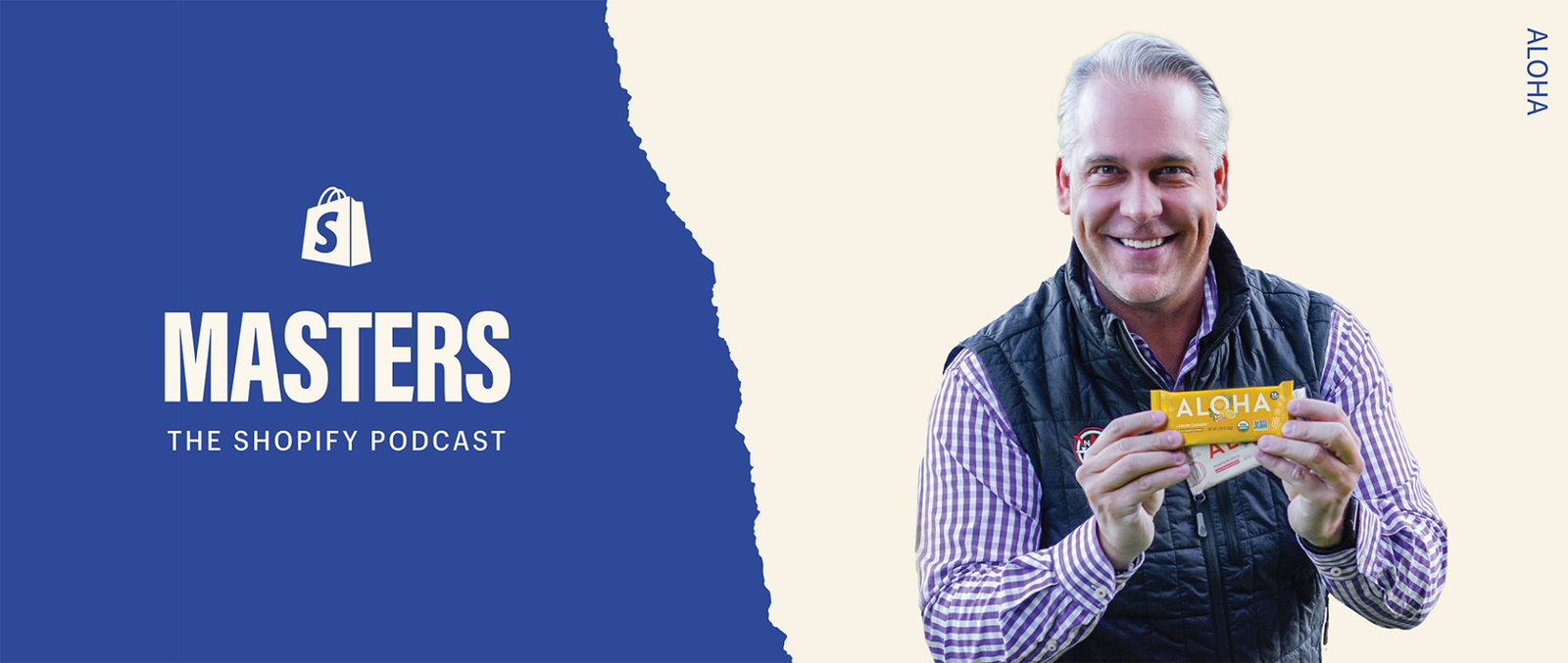When CEO Brad Charron joined Aloha in 2017, the company was in a state of disarray. The plant-based protein brand had up to 70 employees, was losing money, and was overextended in its retail commitments and product lines. Something needed to change.
“We started from scratch,” Brad says. “We blew up everything and started again.”
The first order of business was restructuring the team and getting rid of bloat. The company went from 70 employees to fewer than 10. Brad also closed the company’s physical office space and went completely remote—two years before the COVID-19 pandemic.
By 2022, the company was profitable again. Brad estimates Aloha will hit $100 million in revenue this year with its sales of protein powders, bars, and drinks.
Don’t miss an episode! Subscribe to Shopify Masters.
Focusing on product again
One of the first things Brad did to turn the company around was reevaluate its main products. He narrowed down the product categories and made the products that remained better. The team refined the taste and texture and added macronutrients.
Aloha also invested in better branding and packaging. “Like any consumer good, it’s got to stand off of the shelf or sing off the website,” Brad says.

Rethinking retail
“I was never willing to lose money in any account,” Brad explains, so his pragmatic approach was getting out of retail arrangements that weren’t serving the company anymore. One example was CVS, which was focused more on pharmacy and beauty than on protein bars.
Instead, Brad sought retail partners like regional grocers and health food marketplaces, including Harris Teeter and Thrive Market. “I started to build a retail strategy of building with retail partners in regions who would adopt the brand,” he said. And like any good partnership, he learned his retail partners’ business model, so he could figure out how they could help each other.
All the insight gleaned from retail translated to the direct-to-consumer side of the business. “I could go to that naturally from a position of strength, as opposed to just trying to throw stuff on the wall and see what hits,” Brad says.

Finding partners to stay lean
Even though Aloha is now on track to be a nine-figure business, the company still has only 20 employees. Brad emphasized that it’s important to use technology and work with partners that allow your company to grow sustainably.
That’s one reason he turned to Shopify. When his company was less than 10 people, he couldn’t spend his budget on a custom online store. “You don’t have the resources to do much of anything, to be perfectly honest, let alone build a website from scratch,” Brad says. Shopify’s out-of-the-box tech stack helped Aloha get its online business back on track.
Motivating with an employee-owned structure
For Brad, it was important for Aloha to be employee-owned, because it would help provide incentives for all employees to take smart risks.
He says he was cautious about putting the company in a make-or-break position: “I wasn’t willing to sacrifice all the good effort and endeavors of the people striving toward making this thing viable.”
Brad never liked the idea of investors getting paid out before employees, so he felt like an employee-owned structure was more fair. That way, when the company wins, everyone wins.
To learn more about Aloha, and how Brad and the team rebuilt the company to be profitable, listen to his full interview on Shopify Masters.

